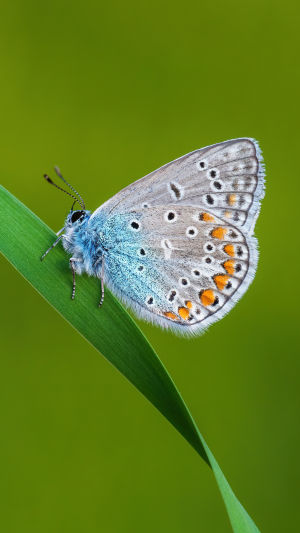The living environment of butterflies varies according to the species of butterflies. The general species like to perch on the branches and leaves of plants, and some like to perch on the cliffs. Butterflies also like to live near places with water, especially slightly salty water, which attracts butterflies the most. Adult butterflies use siphon mouthparts to suck nectar, fruit juice, tree sap, candy or fermented products, and also suck water from streams or moss, feces of birds and animals, and body fluids of animal carcasses. There are different types and different feeding habits.
The activities of adult butterflies are during the day. Most species are more active between 9am and 4pm. But the species of Nymphidae and Ophthalmidae are more active in the morning and evening. Their habitats vary according to the species of insects. Generally, they like to perch on the branches and leaves of plants, and some like to perch on the cliffs. Generally, butterflies are solitary, but some species (such as monarchs) prefer to live in groups.
During the daytime activities of butterflies, individual species also have their unique habitat habits. Like the beak swallowtail, it rests on the treetops and then flies again after a while. Another example is the emerald butterfly, which is territorial. It likes to intercept the butterflies that come and go and fly together, and then return to the same place after a while, the purpose is to intercept the female butterflies of the same kind. This kind of butterfly will fly back even if it is startled when it is caught. Many butterflies also have certain flight routes. Generally speaking, they fly down the mountain from the top of the mountain at 8 or 9 in the morning, and start to fly up at 3 or 4 in the afternoon. Butterfly is a kind of ectotherm, its activity time is affected by temperature, once the temperature drops, it will stop moving immediately.
Butterflies do not collect pollen, because pollen cannot provide energy and nutrients, it goes to the nectar secreted by the nectaries in the flower, but when collecting nectar, because it is close to the bottom of the flower, its own body will come into contact with the stamens , so that the body is covered with pollen.
Nectar is one of the main foods for butterflies, and pollen just accidentally sticks to butterflies when they are feeding. Butterflies feed on nectar, and butterflies gather nectar for their own consumption, unlike bees, which contribute to the family of honeycombs. Butterfly gathering nectar indirectly plays a role in spreading pollen, which is beneficial to the pollination of crops.
Butterflies do not like all flowers, but generally prefer brightly colored flowers. It is precisely because of this that most insect-pollinated flowers have brighter colors, which can attract butterflies to suck nectar and spread pollen. Secondly, butterflies generally prefer flowers and plants with a lot of pollen, exposed pistils, and the same flowering period as the adult period. Finally, different species of butterflies like different flowers. For example, the blue swallowtail likes to suck the nectar of Liliaceae plants, the cabbage butterfly likes to suck the nectar of cruciferous plants, the leopard nymph likes to suck the nectar of the Compositae, and the big-flowered swallowtail likes the pepper tree.





